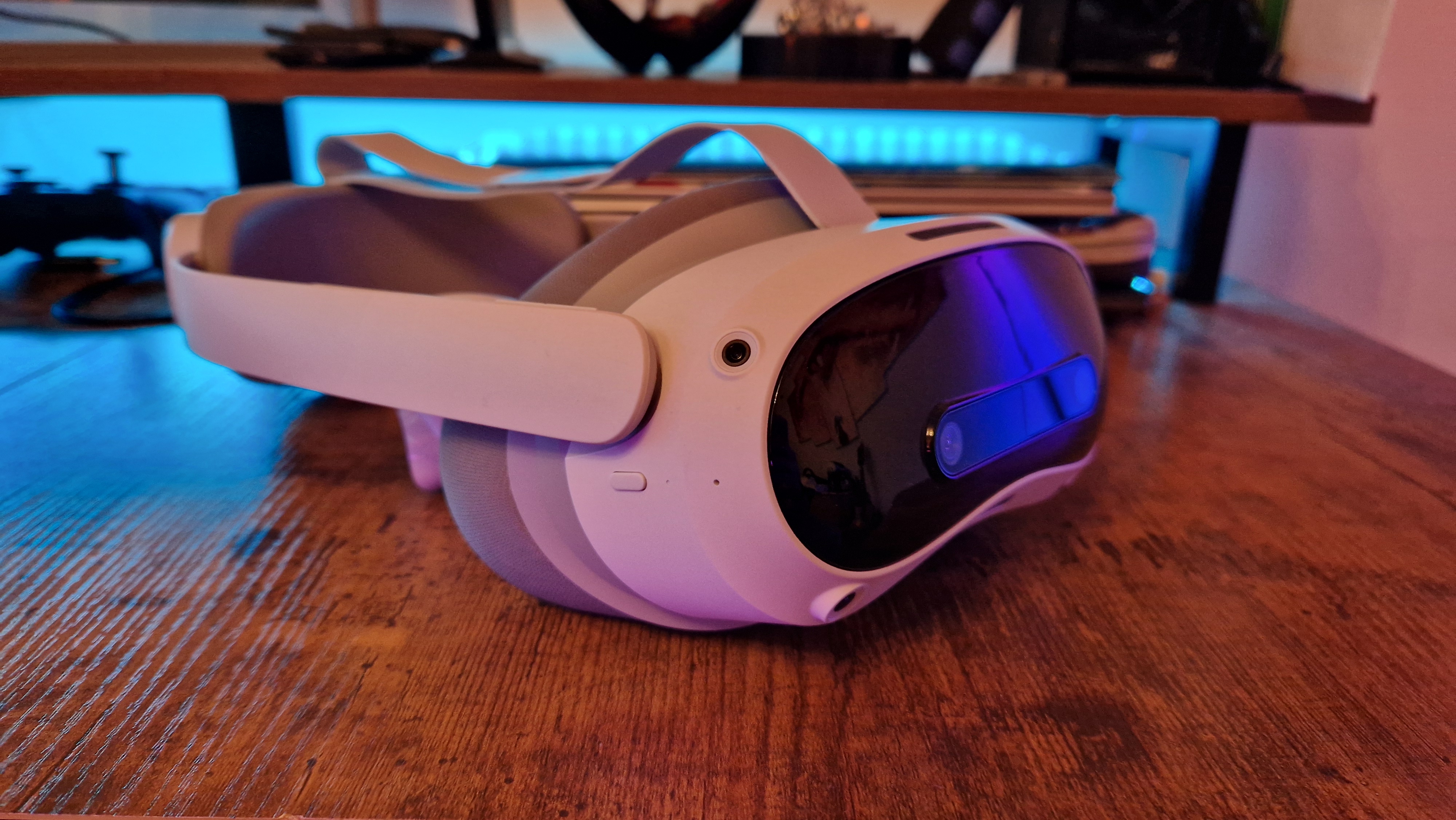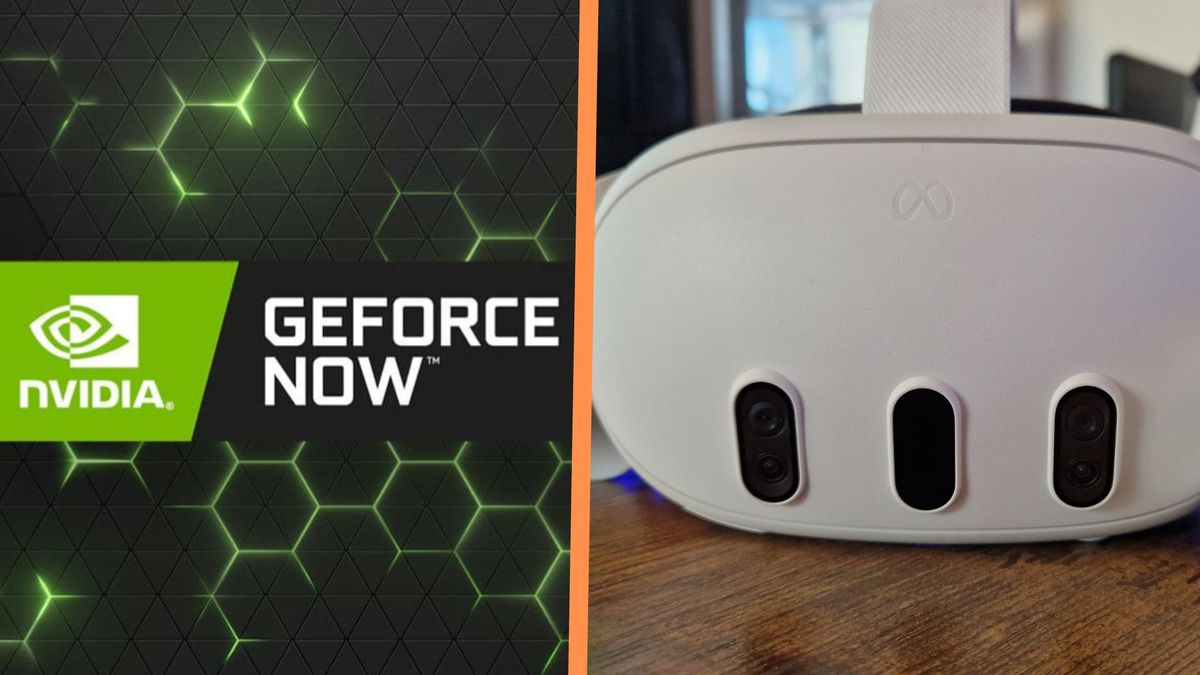Standalone VR headsets are getting more use cases by the day as manufacturers figure out new software features and integrations. The latest news from CES, however, brings more portable gaming allowance to the PICO 4 Ultra, Meta Quest 3, and Apple Vision Pro.
Nvidia GeForce Now is like the GPU manufacturer’s version of Netflix or Game Pass, and it allows you to integrate your existing gaming libraries to its cloud streaming servers so that you can play them on whatever device you want. Later this month you’ll be able to play GeForce Now on some of the best VR headsets, Nvidia has confirmed.
Depending on how much you pay for the subscription service, you’ll get to play at varying degrees of performance, tiered by Nvidia’s graphics cards for reference. On a compatible device, you can stream your games with the 4K performance of an RTX 4080, if your connection can handle it. On the Pico 4 Ultra, however, you’ll only be able to play at up to 1440p, but at least you won’t need to pre-order an RTX 5070 in order to do it.

What might be a surprising bonus for many is that DLSS will also be catered to when playing GeForce Now on one of these headsets, so long as the game you’re playing has DLSS support in its settings. Just keep in mind that the maximum refresh rate of both the Meta Quest 3 and 3S is 120Hz, and the Pico 4 Ultra has a max of 90Hz, so you won’t be able to boost up to Esports frame rates.
Even the Meta Quest 3S has Bluetooth connectivity, so you can hook up your best PC controller to play your GeForce Now games and enjoy them on a commute, or at home when someone else needs to use the TV.
I should clarify that this integration will be more in line with how Game Pass works on the Meta Quest 3. You won’t be able to turn 2D platforming Celeste gameplay into a VR port, but you will get to play on an enlarged display right in front of your eyes. It’s also been confirmed that to play on a VR headset, you’ll need a gamepad-compatible game, and so far, there’s been no mention of cloud streaming of actual PC VR games if you own them.

In my eyes, this is a particular feather in the cap of the PICO 4 Ultra, which feels like it needs to justify itself against the more popular Meta headsets. Jessica Zhang, head of partnerships at PICO, said “Our integration of GeForce NOW underscores PICO’s commitment to expanding our library of content and providing the best possible gaming experiences. This latest work eliminates the hardware barrier and delivers an incredible library of games to our platform, making PICO headsets an ideal destination for immersive entertainment.”
Despite Nvidia‘s slightly confusing marketing speak, GeForce Now isn’t like Netflix – a subscription doesn’t allow you immediate access to a massive library of content. You integrate your libraries from Steam, Epic Games, Xbox, and more, and any games you own in those libraries that are supported by GeForce Now will be available to stream.
The GeForce Now app will be available to download from Pico 4 Ultra later this month, but on the Quest 3 and 3S, you’ll need to visit the GeForce Now website on your device’s browser. Support has also been confirmed for Apple Vision Pro, which is a nice gaming win for any owners of that luxury headset.
Looking to refurbish your gaming setup for the new year? Take a look at the best Meta Quest accessories, the best gaming PCs, and the best gaming handheld.










Leave a Reply